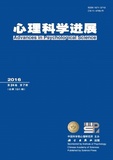The watching-eyes effect is a phenomenon where an individual’s behavior changes in response to images depicting eyes. Multiple experiments have shown that this effect occurs during cooperative behavior. Several psychological processes can explain the watching-eyes effect, including reputation, the rule mechanism, reward and punishment, as well as various cognitive mechanisms. Additionally, some factors seem to limit the effect, including presence of others, task type, individual public consciousness, group identity, and cue (i.e., eyes image) presentation method. Currently, the stability of the watching-eyes effect remains controversial. Thus, future studies should examine individual or intergroup differences that could potentially influence stability. Notable variables include gender, culture, brain physiology, and social- application value.




